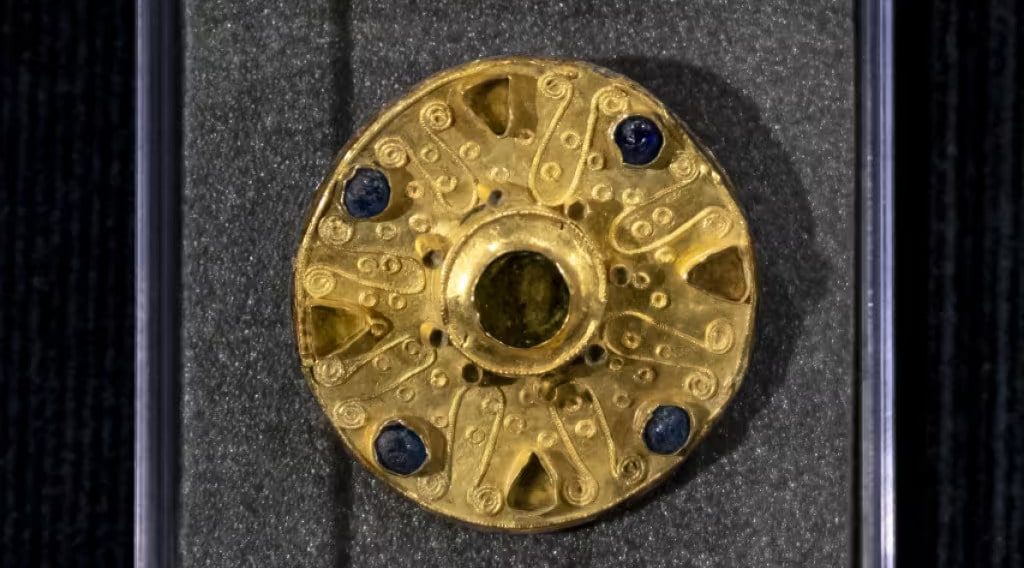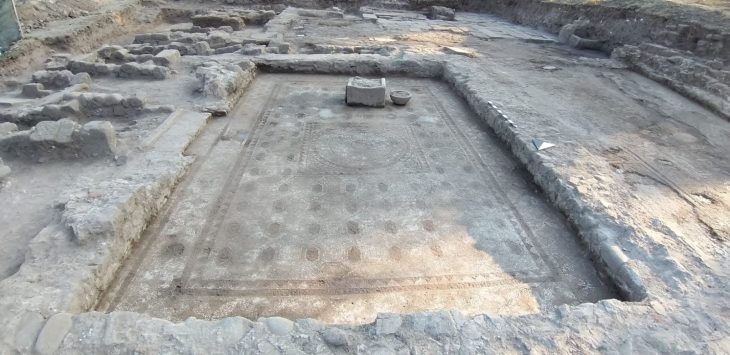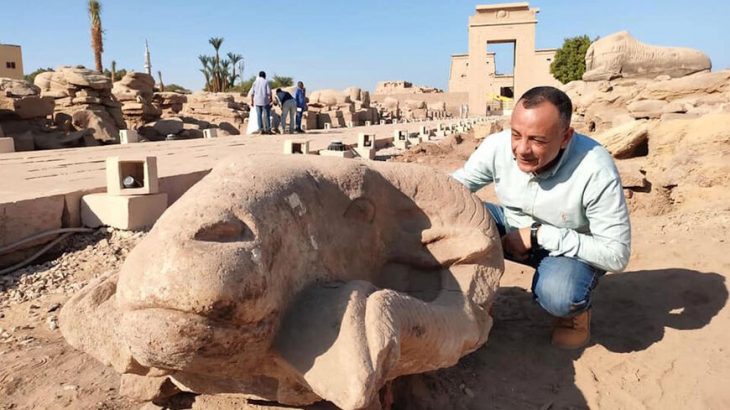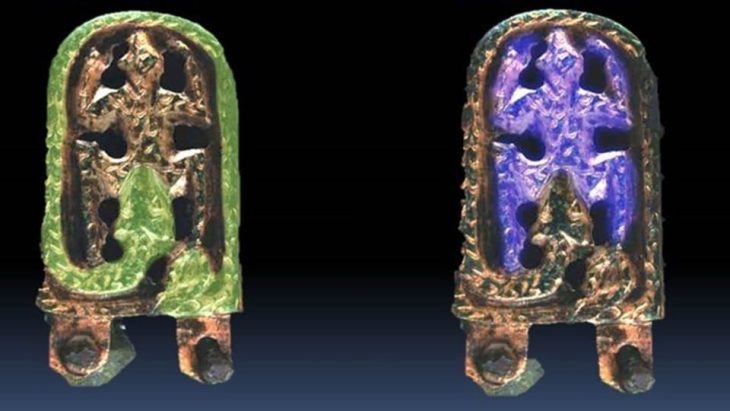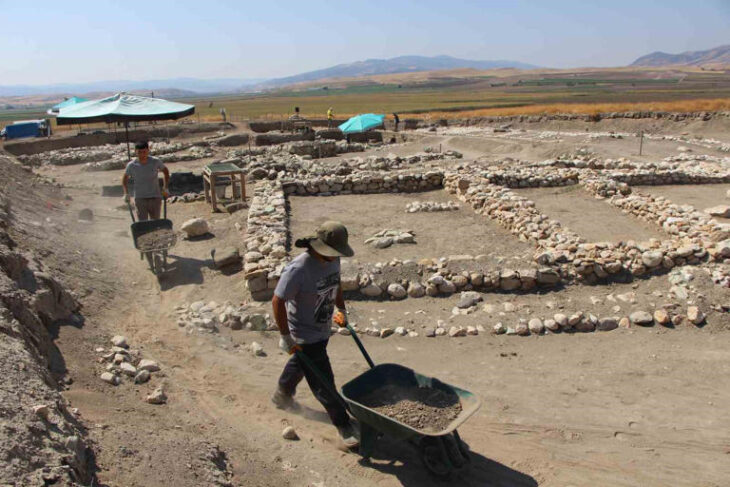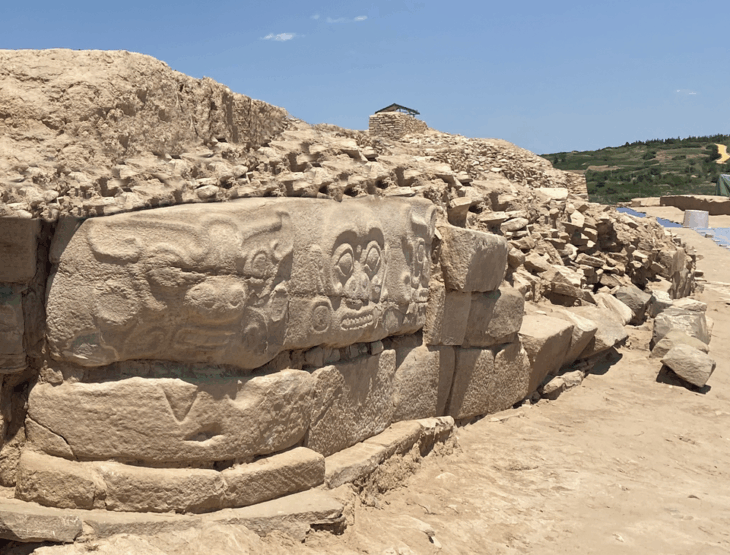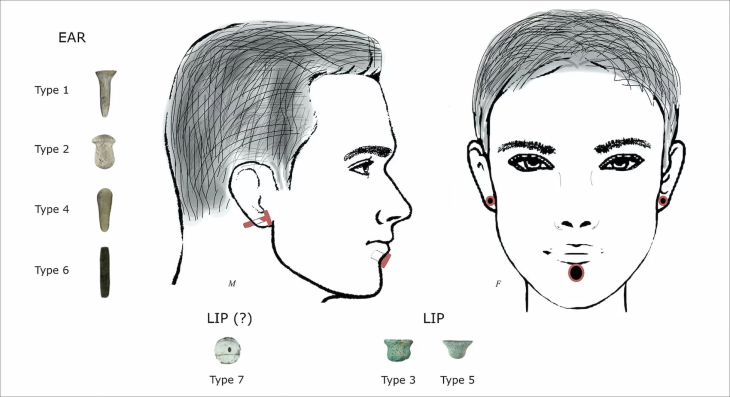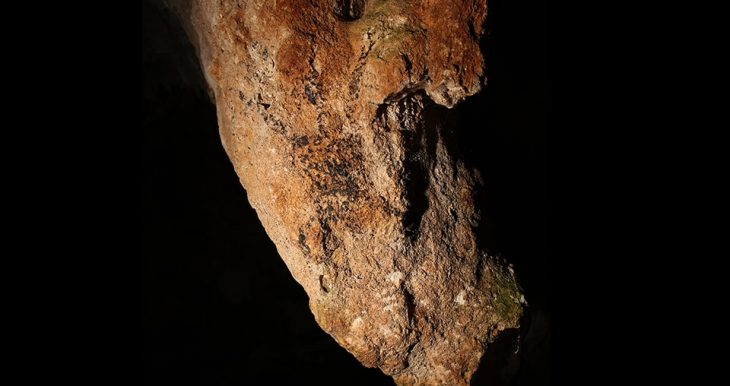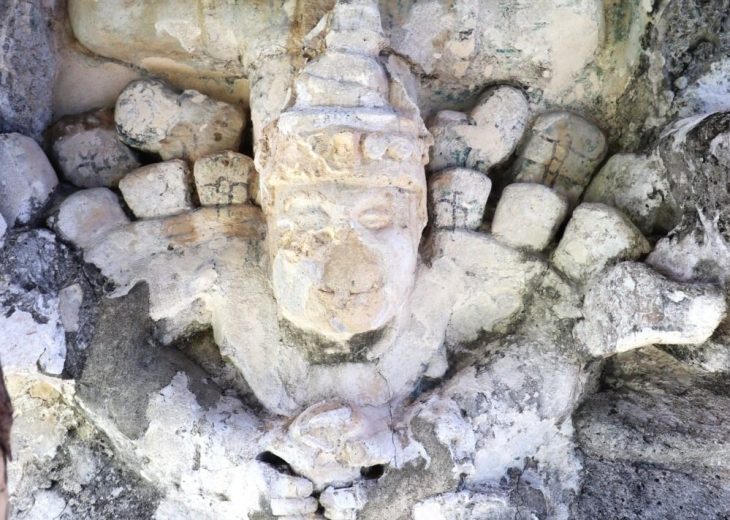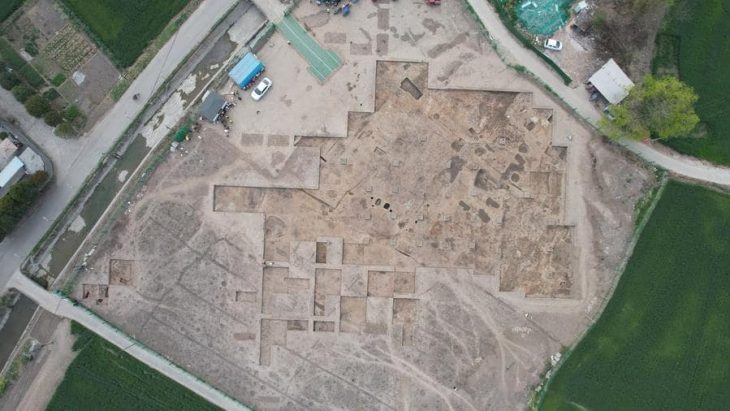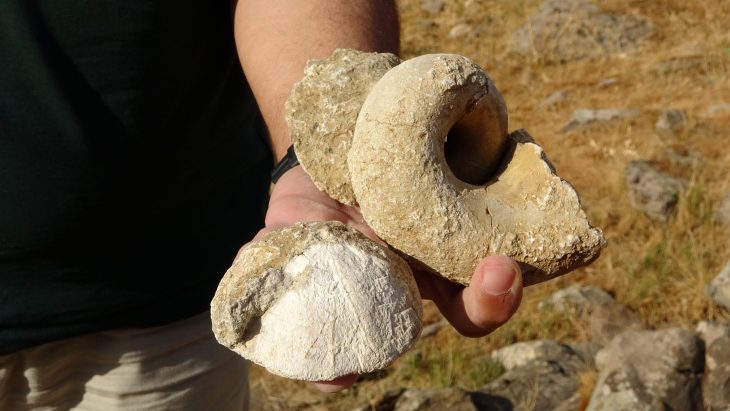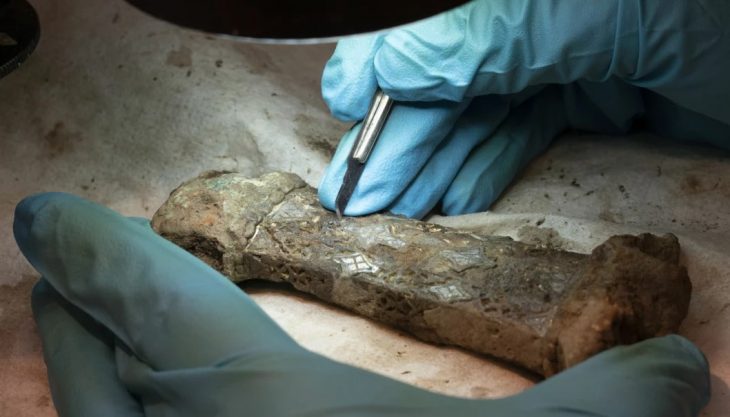An excavation in Basel’s Kleinbasel neighborhood, Switzerland, has uncovered 15 graves, some richly furnished, from an early medieval burial ground.
Because the presence of a burial ground from this time period had been known since the nineteenth century, a rescue archaeology excavation was carried out in the area prior to the installation of new utility pipes. The excavation earlier this year unearthed the 6th-century grave of a young girl buried with a dazzling array of approximately 160 beads.
Of the tombs with valuable additions, the most notable is the discovery of a golden robe clasp from a woman’s grave.
The grave is that of an elite young woman who was about 20 years old when she died in the 7th century. The woman’s skeleton was accidentally destroyed during construction work in the 20th century, and the jewelry remained undiscovered at the time.
The grave contained a rare gold disc brooch made of a non-ferrous metal base plate topped with gold. The disc was then inlaid with green garnet gemstones and blue glass and adorned with gold wire filigree. The brooch most likely held a cloak, now lost, around her neck.
📣 Our WhatsApp channel is now LIVE! Stay up-to-date with the latest news and updates, just click here to follow us on WhatsApp and never miss a thing!!
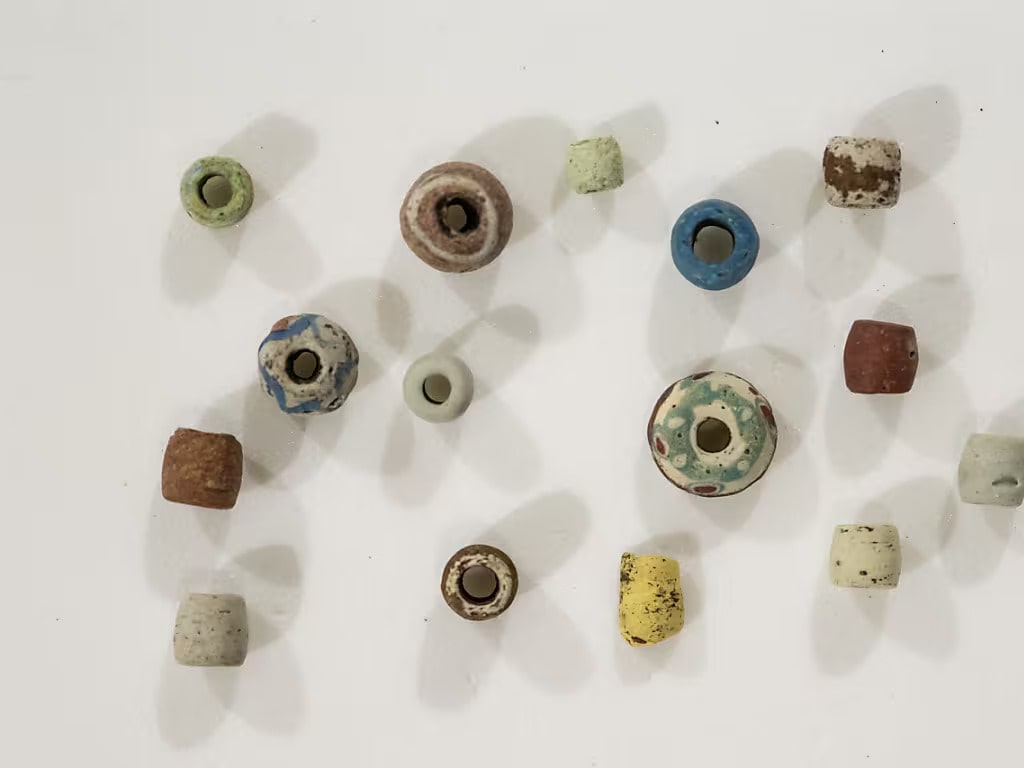
The grave decorations suggest that the woman had a higher social status. She was also discovered wearing 160 pearls and Roman coins as jewelry.
Other graves with valuable gifts were discovered by the archaeologists. They also discovered a girl’s grave containing a gold-tufted belt buckle and 380 pearls. Another boy’s grave contained silver inlaid belt fittings, among other things.
“This is an extraordinary piece,” said Basel canton archaeologist Guido Lassau to the media on Friday. Such finds are “rather singular” in early medieval graves.
Recent discoveries show that the cemetery was more densely populated than archaeologists previously thought.
Basel’s earliest settlement remnants date back to the middle Paleolithic (about 130,000 years ago). The Rhine’s banks, the area of the former gas factory (now the Novartis Campus), and Münsterhügel stood out as the primary settlement areas during the Bronze and Iron Ages. The Murus Gallicus (Gallic Wall), whose remnants can still be seen close to the Münster, was built by the Celts (Rauraci) in the first century BC to fortify the latter area (cathedral). At the same location, the Romans built the Colonia Raurica, which they later expanded into a castle in the third century. The Augusta Raurica colony («Roman City» Augst BL) founded by Emperor Augustus Caesar marks the official start of the Romanization of the area. After the withdrawal of Roman troops, the Roman population settled in the fort, while the Alemanni spread out to the north of the Rhine and also in Augst.

